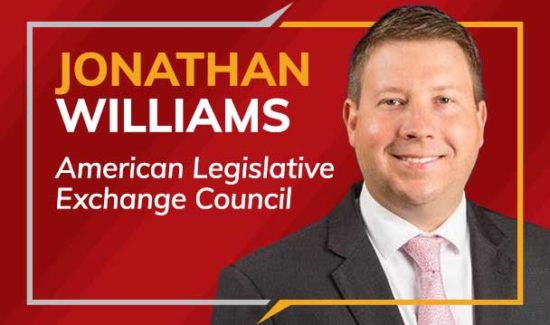Reagan Centennial: Ronnie and Joe
Editor’s note: A version of this article first appeared at National Review Online on February 6, 2010.
February 6, 2011 marks the 100th anniversary of Ronald Reagan’s birth. In a telling development, Republicans around the country have begun holding Reagan Day dinners, as they’ve long traditionally done every February for Abraham Lincoln. This is yet another spontaneous display of affection for Reagan.
Having written so much on the man, I get lots of questions about Reagan this time of year, running the gamut from his domestic achievements to his historic foreign-policy triumph: peacefully ending the Cold War. Sometimes I get asked for unreported anecdotes reflecting on his personality and character. I have a bunch of those, which were eagerly shared with me by people who met Reagan (he talked to anyone) or were dug up from the thousands of letters Reagan wrote to everyday Americans over a long lifetime. (See my NRO article on Reagan and Ruth Smith of Idaho.)
Reagan was just plain likable. Of all the subjects I’ve studied, few were as universally liked. Sure, Reagan, as president, was demonized by the Left, but that’s what the Left does: indecent, ugly rage. Still, even most liberals muster nice words about Reagan personally.
Central to that likability was Reagan’s humility. The word "I" didn’t dominate his conversation, unless he was poking fun at himself. He was no narcissist. Ronald Reagan was not full of pride; he was thoroughly unpossessed of self-love.
And so, with that background, I’d like to take the opportunity presented by Reagan’s time of year—not to mention the month of Presidents’ Day—to share an anecdote that was told to me by Bill Clark, Reagan’s close friend and most significant adviser.
At the time this happened, Clark was serving as Reagan’s national-security adviser. He had previously been deputy secretary of state, and would later be appointed secretary of the interior. His driver all this time was a man named Joe Bullock, a Georgia native who had moved to Washington during the Great Depression. Joe was a victim of the cruel Jim Crow laws that afflicted the South. He went to Washington for a better life.
Joe first found employment as a mule driver. He eventually began chauffeuring various senior people in the federal government, some of whom, including a high-level figure in the Carter administration, didn’t treat him well; in fact, that previous cabinet secretary didn’t speak a word to Joe in three years.
Thus, Joe was taken aback when Bill Clark not only talked to him, asking questions about his life and family, but also asked whether he could sit up front. Clark rode shotgun with Joe, drawing more than a few stares and safety concerns as well, since Clark, given his influence in national security, was a target of America’s enemies.
One morning, Clark’s father visited Washington. He hit it off with Joe. Clark’s father was a rancher, a man of the West. He gave Joe a gift: a Western-style belt, with a kind of "John Wayne belt buckle," as Clark described it. Joe loved it, proudly displaying it by always leaving his blue suit-jacket unbuttoned.
That belt soon assumed a life of its own. A state visit by England’s Queen Elizabeth and Prince Philip was upcoming, and protocol demanded that the White House provide gifts. Clark, Reagan, and a few others brainstormed following a morning briefing. For Philip, Clark suggested a "Western belt." He had one in mind, made by Si Jenkins, a Santa Barbara friend of both Clark and the president. (Reagan, too, was a California rancher.)
"Well, what does it look like?" asked Reagan. Clark noted he had a model in the car: Joe, who was wearing the belt. "Send him up," ordered the president. They called for Joe, who entered via the door of Reagan’s secretary.
Joe had worked for the federal government for half a century, but had never been within 50 yards of the Oval Office. He walked in. He saw Clark, Vice President Bush, the senior aides, and the president of the United States. He was in awe, overcome. Suddenly, this tough six-foot-four man began weeping: He had come so far since Jim Crow and the Great Depression. He was choked up.
No one in the room was prepared for that reaction. They were dead silent, uncomfortable, unable to respond—except for Ronald Reagan. The president rose, walked over to the driver, extended his hand, breathed in, and said matter-of-factly, "Mr. Bullock, I understand you have a belt to show me?"
It was an "everyman" touch. And it put old Joe immediately at ease. Business-like, Joe showed the belt, and then he and Reagan began swapping stories, chatting away like old friends.
"The rest of us just faded away," said Bill Clark, "as the two got along famously." President and driver, remembering the old days.
Bullock left with a story to tell his fellow drivers, and his grandchildren. He died a few years later.
No, this anecdote is nothing dramatic. It’s not like challenging Gorbachev to tear down the wall. It’s simply another of many small stories I hear constantly about Ronald Reagan. This was a good president and a good man. The White House needs more of them. That’s a thought worth bearing in mind this February.
— Dr. Paul Kengor is professor of political science at Grove City College and executive director of The Center for Vision & Values at Grove City College. His books include "The Crusader: Ronald Reagan and the Fall of Communism," "The Judge: William P. Clark, Ronald Reagan’s Top Hand," and the newly released "Dupes: How America’s Adversaries Have Manipulated Progressives for a Century."





